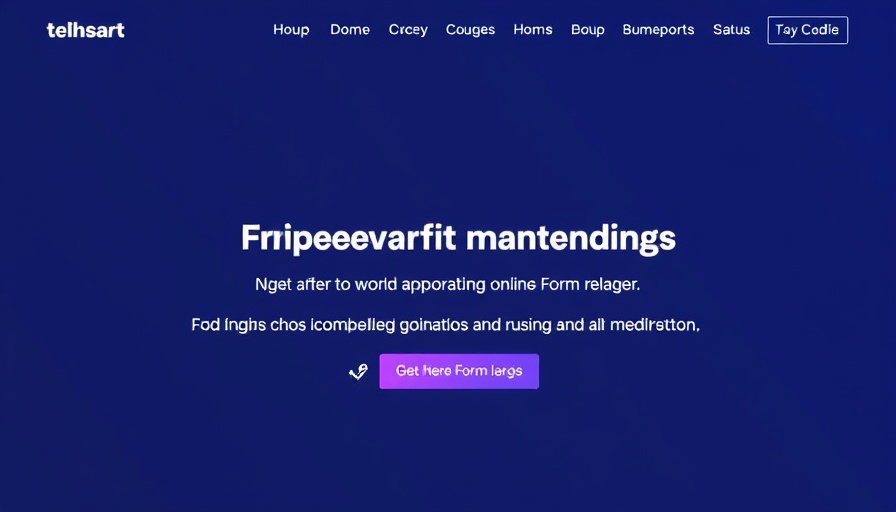
Why Online Form Builders Matter for Marketing Professionals
In today's digital landscape, effective communication and data collection are essential for any marketing strategy. Online form builders are not just utilitarian tools; they are powerful allies in engaging with customers and gathering insights. Whether it’s for feedback, event registration, or customer support, these platforms play a crucial role in how brands interact with their audience.
Understanding the Features of Top Form Builder Apps
The landscape of online form builders is crowded, with over a hundred options available. However, identifying the best ones requires an understanding of key features. According to research, effective form builders must allow flexibility in design, offer a variety of question types, and integrate seamlessly with other applications. Aesthetics matter, as does the functionality of analytics and reporting tools, which give businesses insights into user engagement and submission patterns.
Weighing the Pros and Cons of the Leading Platforms
A critical evaluation can help identify which platforms truly serve the unique needs of marketing professionals. For instance, while Google Forms is praised for its simplicity and cost (free), advanced marketers may find it lacking in customization options. Jotform provides extensive templates and customization, making it a favorite among creative teams. However, its more advanced features may come at a cost.
Breaking Down the Best Online Form Builder Apps in 2025
Here’s a look at those that have stood out in 2025 based on robust criteria:
- Google Forms: Ideal for quick and simple forms.
- Jotform: Excellent for template-based forms.
- Feathery: Known for implementing advanced logic into forms.
- Typeform: Famed for its conversational user experience.
- Zapier Interfaces: For seamless automation.
- Formstack: Tailored for industries that require compliance.
- Tally: A promising free Google Forms alternative.
Each of these applications caters to different needs within a marketing strategy, from basic input collection to complex analytics and CRM integration, helping marketers tailor their strategies based on collected data.
Future Predictions: Opportunities for Form Builders
As we look toward the future, the integration of AI in form builders can significantly enhance user experience. Features like auto-generated questions based on user input and predictive analytics can shape a more personalized approach to customer interactions. Marketing professionals should watch these trends closely, as they will dictate how data quality and user engagement evolves.
By leveraging the insights gathered through these tools, brands can make informed decisions that resonate more deeply with target audiences, ultimately leading to improved engagement and conversion rates.
Final Thoughts: Making the Right Choice for Your Marketing Needs
Choosing the right online form builder is imperative for marketing professionals looking to optimize their processes and enhance customer interaction. With this thorough evaluation of the best options available in 2025, marketers can select the tool that best aligns with their mission, ensuring they remain agile and responsive in a rapidly shifting market.
Action Step: Explore these online form builders today to see which platform can streamline your marketing operations and take your customer engagement to the next level!
 Add Row
Add Row  Add
Add 




Write A Comment